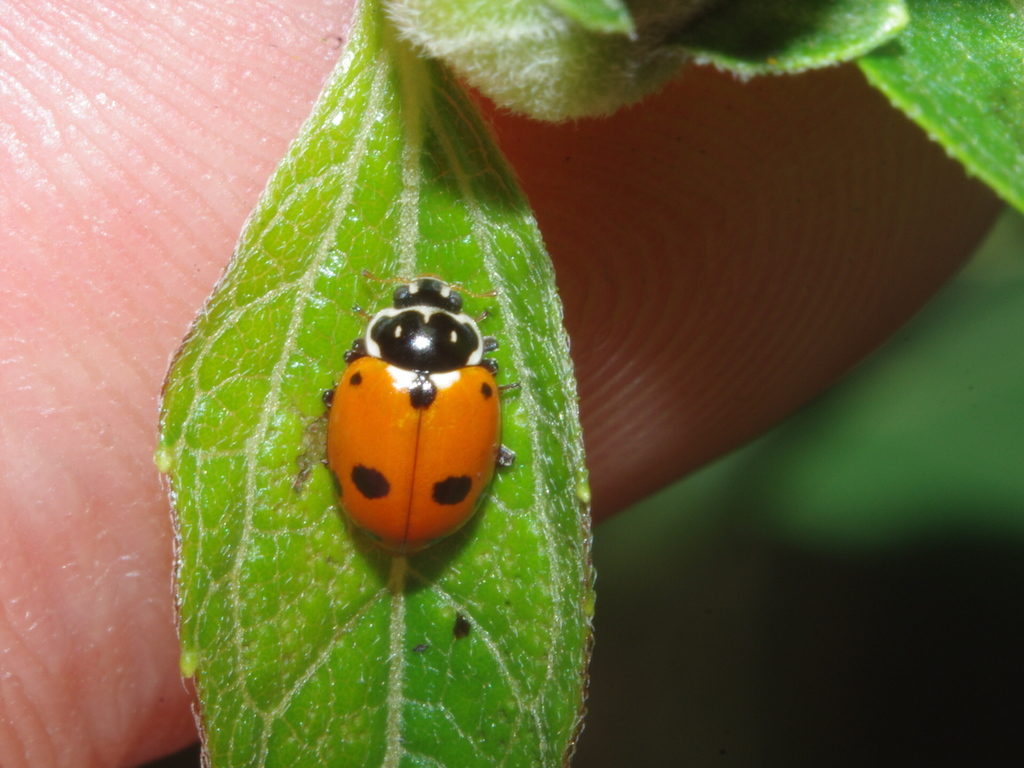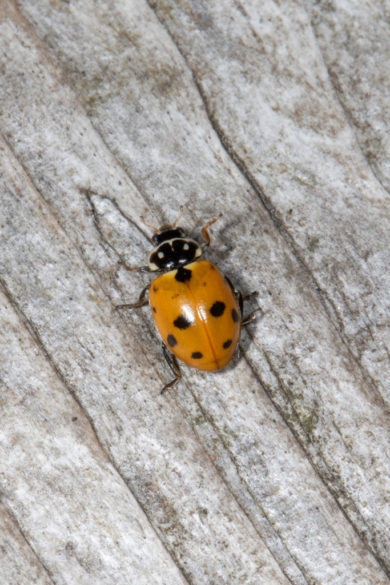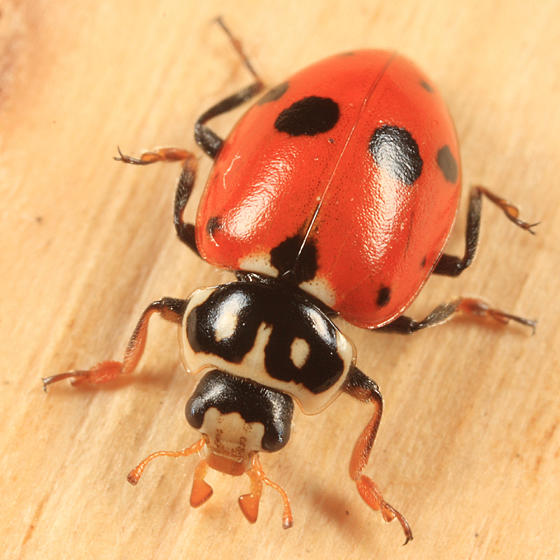
Variegated Lady Beetle © Erik Danielsen
The Variegated Lady Beetle is also known as the Adonis Ladybird. This species is native to Europe and is usually found in meadows or gardens. Its body is elongated and it can have anywhere from 0-15 black spots on its wing covers.
Status
Introduced
Non-Native species found in the United States and Canada.
Last Seen
2021
Fun Fact
The first North American discovery of the Variegated Lady Beetle was in Quebec in 1987.
Identification
The Variegated Lady Beetle is 4 to 5 mm in length, and is oblong in shape.
- The head is black, with white spots on the front.
- The pronotum is black, with a white margin wrapping around the sides and front of the pronotum, with a central line extending into the black patch. There are typically two white spots towards the front of the black portion of the pronotum, which typically are not connected to the white margin.
- The elytra are reddish orange in color, with 3 to 15 spots concentrated towards the rear of the elytra. At the top of the elytra (towards the pronotum), there is a central black spot that spans both elytra, with two white spots on either side of it (one on each elytron).
- Top segment of the legs is black, bottom segments of the legs are brown.
- Frequently confused with the Two-spotted Lady Beetle, Convergent Lady Beetle, Asian Lady Beetle, and Seven-spotted Lady Beetle.
Habitat
Is associated with herbaceous species in dry or sandy environments. Can be found in disturbed sites, industrial sites, and agricultural crops as well.
General Range
The Variegated Lady Beetle is native to Europe, Northern Africa, and Asia, but has continued expanding its distribution across Africa and Asia, and has been introduced to North and South America. The Variegated Lady Beetle can be found across the United States.
Food
Mainly eats aphids, will also consume thrips, whiteflies, scale insects, and mites.
Life Cycle
Easiest to find in the warm summer months. One study noted a population increase in the fall, which may be a result of adults aggregating to hibernate. Eggs are laid on herbaceous plant leaves and stems, which hatch and complete the larval stages in 9 to 12 days. Larvae then pupate and emerge in around 6 days.
More Information
You can find more information about Variegated Lady Beetles using the following links:
Vermont Distribution
Visit the iNaturalist Observation Map and Occurrence Records to find out where Variegated Lady Beetles have been seen in Vermont.








